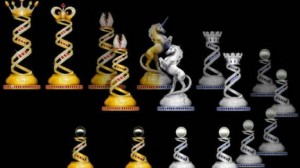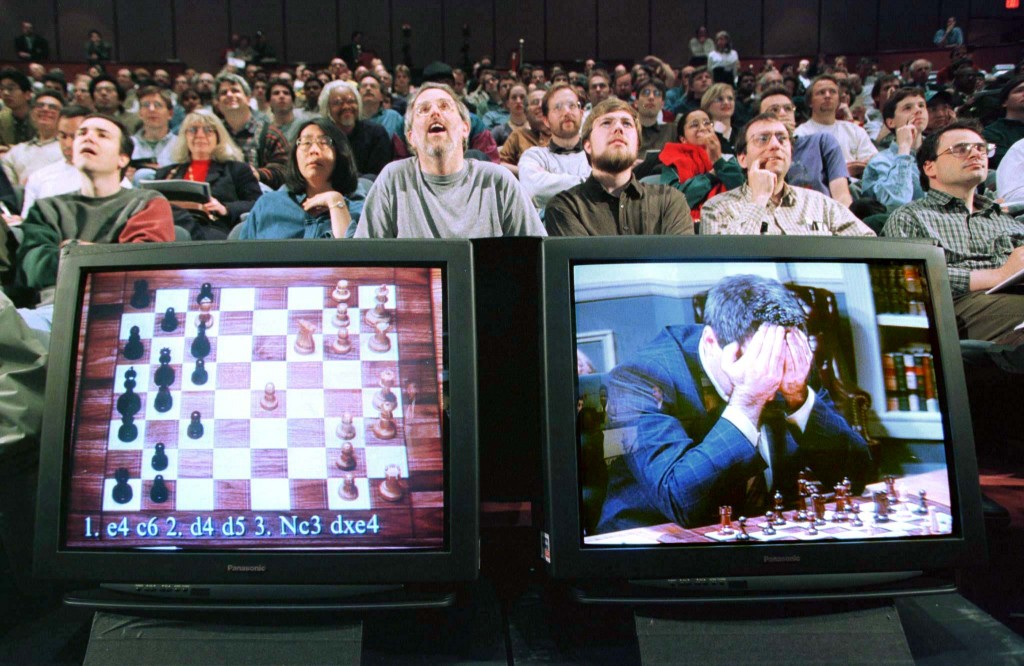The top rated game wrapping up National Games Week is Chess. It is by far the oldest game on the list and arguably one associated with geeky youngsters with pocket protectors and elderly gentlemen hanging out in the park. It’s hard to make chess sound sexy. Nonetheless, the game has a long and colorful history of culture and politics and technology.
Chess traces it direct roots to the Gupta Empire of India in the 3rd century where it was called chaturaṅga. Merchants and traders going to India brought the game back to their own lands in the 6th and 7th centuries. In the east the Chinese evolved the game into xiangqi. In the west the Persians passed the game to the Islamic world where the game was called shatran. By the 10th century chess made it to Russia and in the 11th century it had spread into Western Europe.
Chess was imported into Europe initially for the ornamental pieces used in the game by sailors and traders who knew little about the game. The rules were different depending on the import source of the game and gaps in the rules allowed for local modification.
The original game of chaturaṅga represented a battlefield supported by the four basic divisions of the Indian military – infantry, cavalry, elephants and chariots. The king was sometimes a general. The queen was a vizier (advisor or minister). Much of the movement of the pieces was different.
As the game spread throughout Europe, it became clear that not everyone was using the same rules. Standardization of the rules progressed slowly. It was not until the 15th century that the game started taking on the rules that we are familiar with today. The first book to truly describe the game and explain the rules was Luis Ramirez de Lucena’s “Repetición de Amores y Arte de Ajedrez”. The race of the chess masters was then on to develop strategy, create opening elements, establish middlegame tactics and finalize endgame stages.
By the 18th century chess was a thinking man’s game. It was a game for sophisticated intelligentsia, the teachers, leaders, clergy and the upper crust of society. It was a game of gentlemen, where a “chess duel” was enough to satisfy honor, equal to a duel of pistols or swords.
As the 19th century dawned, chess became more mainstream. It was played in coffee houses. Books and journals about chess became popular and chess clubs started to form. Chess clubs held tournaments for their members and would travel to other cities to challenge other chess clubs in the game. Tournaments evolved to be a showcase of the best of the best and chess masters became celebrities.
Chess became more than a game. It was a science. There was strategy and planning, understanding the thinking and play style of your opponent, the ability to play a current move while understanding what it would result in five moves later. Chess became math in motion. And it became everyman’s game. There were no barriers to entry and in a chess club or a tournament the mixing of social classes was perfectly acceptable because the game relied on intellectual prowess and foresight and not on social status.
Besides the functional and entertainment value of chess, the game also stood out for the artistry of the board and the pieces. Ornamental chess design has always been held in high regard and many collectors would seek out or commission games or pieces that held special meaning or value to them. Popular culture also took advantage of chess. Sets have been designed with pieces based on historical figures, movie lore and cultural themes.
Chess has had a lot of innovation in the second half of the 20th century. Star Trek introduced and made popular three dimensional chess. TSR introduces Dragon Chess, also played on a three dimensional board. A number of companies introduced variations on three player and four player chess games.

Jewel Royale Chess Set from Boodles, made of gold and platinum and decorated with rubies, sapphires and diamonds. Yours for $9.8 million.
And chess has not been immune to ostentation. Throughout history many sets have been designed with gold and silver, diamonds, rubies, sapphires and pearls. You can easily find a functional chess set for $20 and if you have the cash, you can find one for $20 million to make your insurance agent cringe.
A more modern take on chess has been computers as opponents. Early chess playing computers date back to the 1970s. Back then memory and CPU power were limited and the computational process simply had not reached the point where it could effectively play a human. Early chess programs were prone to errors and failure and could not “think” more than just a handful of moves ahead. In 1968 international chessmaster David Levy made a bet that no computer will beat him in the next decade. Even though there were takers, no computer beat David Levy and in 1978 he won his bet. But Levy also acknowledged that as technology improves, it will become harder and harder for man to beat machine. As Levy predicted, his Waterloo came in 1989 when IBM’s Deep Thought beat him in an exhibition game. In 1997 IBM’s Deep Blue defeated world chess champion Garry Kasparov.
Over the last century psychologists invested a lot of energy into the study of chess players. There is a cultural belief that smart people are better at chess and that the super smart are the best at winning games. Multiple studies have shown that while there is a correlation between smart people and chess, there is no correlation between IQ and the ability to win chess games. Likewise, there are many high IQ individuals who simply have no interest in the game. The studies did identify that good chess players tend to be more disciplined, more structured and more analytical. They are more likely to be introverts. And a disproportionate percentage of chess lovers tend to be left-handed.
[whohit]2014-11-28 National Games Week Countdown – #1 Chess[/whohit]








